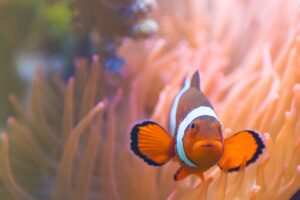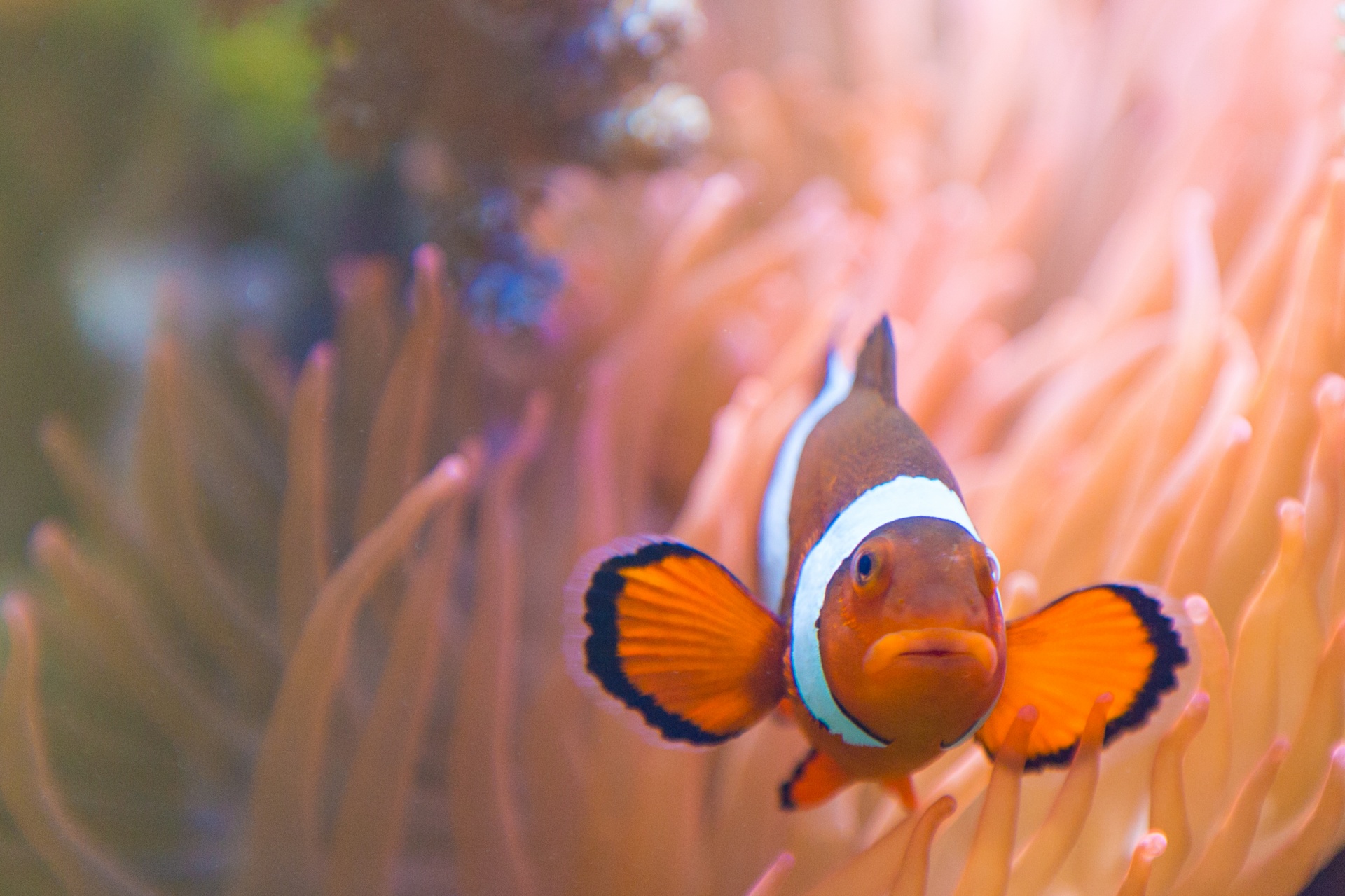
False Clownfish Quick Care Facts:
Environment: Tropical 75 – 81°F (24 — 27°C)
pH: 8 to 8.4
KH: 8.0-11.0
Diet: Omnivorous
Breeding: Egg layers
The common clownfish, otherwise known as the false clownfish, the false percula clownfish, anemonefish, and the ocellaris clownfish, is a very popular breed of saltwater fish. They are beloved for their distinctive colors and vivacious nature.
Aquarium Conditions
In order to feature an enticing environment for your clownfish, it is important to equip the aquarium with a wide variety of caves and corners for the fish to explore. They enjoy the comfort of being able to hide when they feel threatened. This species of fish also works well with reef aquariums, though general rock arrangements are recommended for beginners.
Feeding Recommendations
This species is recommended for new fish owners because they are very easy to feed. The false clownfish is omnivorous and can easily subsist on a wide variety of different foods, including most types of marine flakes. In order to promote the fish’s health, it is recommended to feed it a diet of algae and vegetable based matter along with protein rich food. Keeping algae in the tank can allow them to graze between meals.
Breeding Information
Unlike most saltwater fish, common clownfish are much easier to breed. Initially, all clownfish that are born are male. When paired with other fish, the larger and more dominant fish becomes the female. After matings, eggs are typically laid on a steady and flat surface, like a rock. When the fry hatch, they are much more sensitive to feeding needs than adult clownfish. They should be fed regularly every two to three hours but only very small amounts of food in order to prepare their bodies. They can usually be seperated from their parents after five to six weeks.
Possible Diseases
Much like any other type of fish, keeping the aquarium clean and carefully maintained can cut down on the risk of a lot of diseases. Clownfish are particularly susceptible to several different parasitic infections and fin rot. Symptoms are usually readily apparent and infected clownfish must be quarantined immediately in order to ensure that infections do not spread to other fish.
